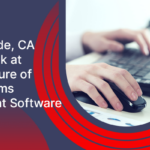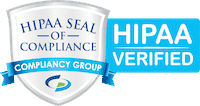Riverside, CA: A Look at the Future of Claims Management Software in 2024
July 25, 2024
In the fast-paced world of insurance, efficient claims management is vital for maintaining customer satisfaction, controlling costs, and staying competitive. With the right claims management software, insurers can streamline workflows, enhance accuracy, and improve communication, ultimately delivering superior service to policyholders. However, with numerous options available in the market, choosing the right software can be overwhelming.
Here’s a guide on what to consider before purchasing claims software and the key features to look for:-
What to Consider Before Purchasing Claims Management Software
- Business Needs and Objectives: Before investing in claims management software, it’s essential to assess your organization’s specific needs, goals, and challenges. Consider factors such as claim volume, complexity, regulatory requirements, and integration with existing systems.
- Scalability and Flexibility: Choose a claims management software that can scale with your business and adapt to evolving requirements. Whether you’re a small agency or a large enterprise, ensure that the software can accommodate growth, support multiple users, and integrate with other systems seamlessly.
- Vendor Reputation and Support: Research the reputation and track record of the software vendor. Look for reviews, testimonials, and case studies from other customers to gauge satisfaction levels. Additionally, consider the vendor’s customer support capabilities, including training, implementation assistance, and ongoing technical support.
- Security and Compliance: Data security and compliance are paramount in the insurance industry. Ensure that the claims management software adheres to industry standards and regulations, such as HIPAA for healthcare claims or GDPR for personal data protection. Look for features such as encryption, access controls, audit trails, and regular security updates to protect sensitive information.
- Cost and ROI: Evaluate the total cost of ownership (TCO) of the claims management software, including licensing fees, implementation costs, training expenses, and ongoing maintenance fees. Consider the return on investment (ROI) in terms of efficiency gains, cost savings, revenue growth, and improved customer satisfaction.
What Features Should You Look for in Claims Management Software?
- Intuitive User Interface: Choose a claims management software with an intuitive and user-friendly interface that minimizes training time and maximizes productivity. Look for features such as customizable dashboards, role-based access controls, and drag-and-drop functionality for easy navigation and data entry.
- Automation and Workflow Management: Opt for software that automates routine tasks, such as data entry, document generation, and task assignments, to streamline workflows and reduce manual errors. Look for features such as rule-based automation, workflow orchestration, and decision support tools to improve efficiency and consistency.
- Advanced Analytics and Reporting: Select software that provides robust analytics and reporting capabilities to gain insights into claims trends, patterns, and performance metrics. Look for features such as customizable reports, real-time dashboards, and predictive analytics tools to identify opportunities for process improvement, fraud detection, and cost containment.
- Integration and Interoperability: Ensure that the claims management software can integrate seamlessly with other systems and platforms, such as policy administration systems, billing systems, and third-party data sources. Look for features such as open APIs, standard data formats, and pre-built connectors to facilitate data exchange and interoperability.
- Mobile and Remote Access: In today’s digital age, flexibility and accessibility are essential. Choose software that offers mobile and remote access capabilities, allowing users to submit claims, access information, and collaborate from anywhere, at any time. Look for features such as mobile apps, responsive web interfaces, and offline access options for maximum convenience.
Improve the Employee Experience and Customer Satisfaction with Claims Management Software
- Empowering Employees: Claims management software empowers employees by automating routine tasks, providing real-time access to information, and streamlining workflows. By eliminating manual paperwork and administrative burdens, employees can focus on more value-added tasks, such as customer service, negotiation, and fraud investigation, leading to higher job satisfaction and productivity.
- Enhancing Communication: Claims software facilitates seamless communication and collaboration among employees, agents, adjusters, and policyholders. Through integrated messaging systems, automated notifications, and centralized document sharing, stakeholders can stay informed, engaged, and connected throughout the claims process, improving transparency, trust, and satisfaction.
- Delivering Superior Service: By leveraging claims management software, insurers can deliver superior service to policyholders with faster claim processing, proactive communication, and personalized interactions. Self-service portals, mobile apps, and online claim-tracking features empower policyholders to submit claims, track progress, and receive updates conveniently, enhancing satisfaction, loyalty, and retention.
Conclusion
Choosing the right claims management software is crucial for insurers looking to streamline operations, improve efficiency, and enhance customer satisfaction. By considering factors such as business needs, scalability, security, and integration, and selecting software with intuitive interfaces, automation capabilities, and mobile access, insurers can transform their claims-handling processes and deliver exceptional service to policyholders.
7 Features Every Online Claim Management System Needs
June 27, 2024What to Look for in Claims Management Software?
May 8, 2024









